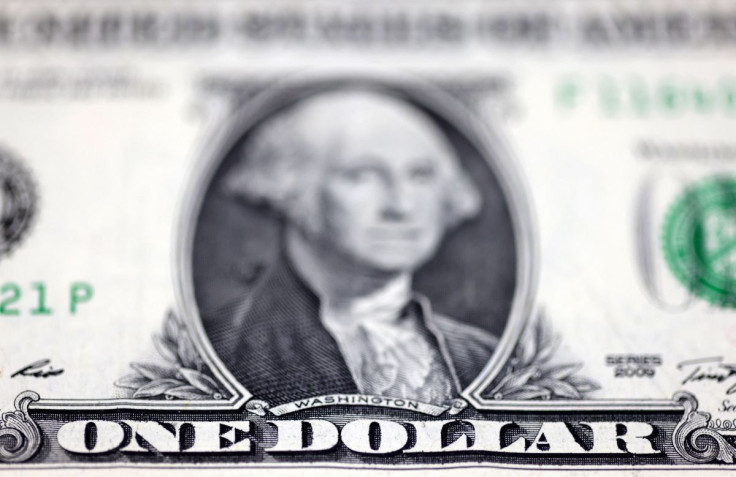Dollar Pauses Below Two-decade Peak As Fed Path Pondered; Aussie Jumps

The U.S. dollar hovered just above a one-week low on Tuesday as markets reduced the odds of a full percentage-point Federal Reserve rate hike this month.
Australia's dollar climbed back toward Monday's one-week high amid a hawkish turn to comments from country's Reserve Bank.
Bets for supersized Fed easing ramped up last week after data showed U.S. inflation, already at a four-decade high, continued to accelerate in June. But some Federal Reserve officials were quick to throw cold water on such talk, and figures from Friday showed an easing of consumer inflation expectations to the lowest in a year.
Traders in futures contracts tied to the Fed's short-term federal funds policy rate, who had been leaning toward a full-percentage-point rise in interest rates for the July 26-27 meeting, shifted their bets firmly in favour of a 0.75-percentage-point increase, with the odds last seen at about 81%.
The dollar index - which gauges the greenback against six counterparts - was flat at 107.46. That was off Monday's low of 106.88 but also well back from the high of 109.29 last week, a level not seen since September 2002.
The euro, which is the most heavily weighted currency in the dollar index, slipped 0.13% to $1.01305, but that came after putting on around 0.6% overnight for a second day of strong gains.
The common currency slid as low as $0.9952 on Thursday for the first time since December 2002, pressured by uncertainty about a worsening energy supply crunch in the euro zone.
Traders are biting their nails ahead of Thursday, when gas is supposed to resume flowing through the Nord Stream pipe from Russia to Germany after a shutdown for scheduled maintenance.
Russia's Gazprom declared force majeure on gas supplies to Europe to at least one major customer, in a letter dated July 14 and seen by Reuters on Monday.
Despite the uncertainty, the European Central Bank is poised to raise interest rates on Thursday for the first time in more than a decade. It has telegraphed a 25 basis-point move, but heated inflation has some traders punting for a half-point hike.
"The balance of risks is tilted to a weaker EUR (whereas) the path of least resistance for the USD is to continue trending higher because of the poor global growth outlook," Commonwealth Bank of Australia analyst Carol Kong wrote in a client note, referring to the dollar's role as a safe haven.
Elsewhere, the yen hovered near a 24-year low ahead of a Bank of Japan policy decision on Thursday, with the central bank committing repeatedly in recent days to continued ultra-easy settings.
The dollar was little changed at 138.055 yen, not too far from Thursday's peak at 139.38, a level not seen since September 1998.
Sterling was little changed at $1.1954 after sliding back from Monday's one-week high of $1.2032 overnight. It slumped to $1.1761 on Thursday for the first time since March 2020, with Britain facing an acrimonious and divisive contest to replace ousted prime minister Boris Johnson.
The Aussie climbed 0.44% to $0.6843, and touched $0.68475 at one point, narrowing the gap to the previous session's peak of $0.6853, the highest since July 11. It had been as low as $0.66825 last Thursday, the weakest in more than two years.
Reserve Bank of Australia policy makers see the need for more policy tightening on top of recent hikes, as interest rates are still too low to constrain inflation expectations amid a strong labour market, minutes of its meeting earlier this month showed on Tuesday.
"The RBA board has lifted the intensity of its rhetoric," Westpac economist Bill Evans wrote in a research note.
"Another 50 basis points in August seems highly likely."
© Copyright Thomson Reuters 2024. All rights reserved.







